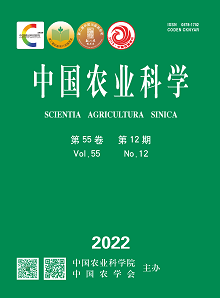【Objective】In order to provide a theoretical basis for the quality control of flat peach juice products, the aroma quality changes and the main deterioration factors of flat peach juice after thermal sterilization were investigated.【Method】 Flat peach juice samples were prepared by using four flat peach varieties from Xinjiang province (Zaolupan, ZLP; Zaopan, ZP; Ruipan1, RP1; Ruipan18, RP18) as raw materials and treated at 85℃ for 30 min. Then, the changes of sensory characteristics and aroma composition were investigated by using E-nose, descriptive sensory evaluation (DSA), and GC-MS. Furthermore, OPLS-DA model was applied to screen the marker compounds which caused the quality changes in thermally sterilized juice.【Result】Descriptive sensory analysis and E-nose results indicated that differences existed among four fresh juices, but all of the fresh samples showed high scores in green, peach-like, floral, and fruity attributes. Whereas, the aroma quality of flat peach juice changed greatly after thermal sterilization, as reflected by the decrease of green attribute and the increase of sweet, off-flavor, and cooked flavor. Seven categories of volatile compounds were identified by GC-MS, including esters, lactones, aldehydes, alcohols, ketones, terpenes, and furan compounds. The concentration of aldehydes (hexanal, (E)-2-hexenal), esters (ethyl acetate, hexyl acetate) and terpenes (limonene) decreased significantly after thermal sterilization, while some compounds with off-flavor attribute (pentanal, α-terpineol, β-damascenone) increased significantly. Ten compounds, including three categories compounds (aldehydes, esters, and terpenes) and (E)-2-hexenal, hexanal, ethyl acetate, benzaldehyde, limonene, hexyl acetate and (Z)-3-hexenyl acetate were screened as markers that could distinguish the fresh juice and thermally sterilized juice according to S-Plot and VIP value of OPLS-DA model, so this result verified the accuracy of sensory evaluation and GC-MS analysis.【Conclusion】 The green attribute significantly decreased, meanwhile off-flavor and cooked flavor attributes emerged after thermal sterilization. The decrease of (E)-2-hexenal, hexanal, ethyl acetate, benzaldehyde, limonene, hexyl acetate and (Z)-3-hexenyl acetate and the formation of pentanal and β-damascenone were the main factors for leading to the loss of green attribute and formation of off-flavor and cooked flavor. GC-MS and sensory evaluation coupled with multivariate statistical analysis method (PCA/ OPLS-DA) could be used to accurately evaluate the effect of thermal sterilization on the aroma profile of flat peach juice, and further to trace the key factors of flavor quality deterioration of thermally sterilized juice, which provided a reference for further exploring the degeneration mechanism of thermally processed juice.









